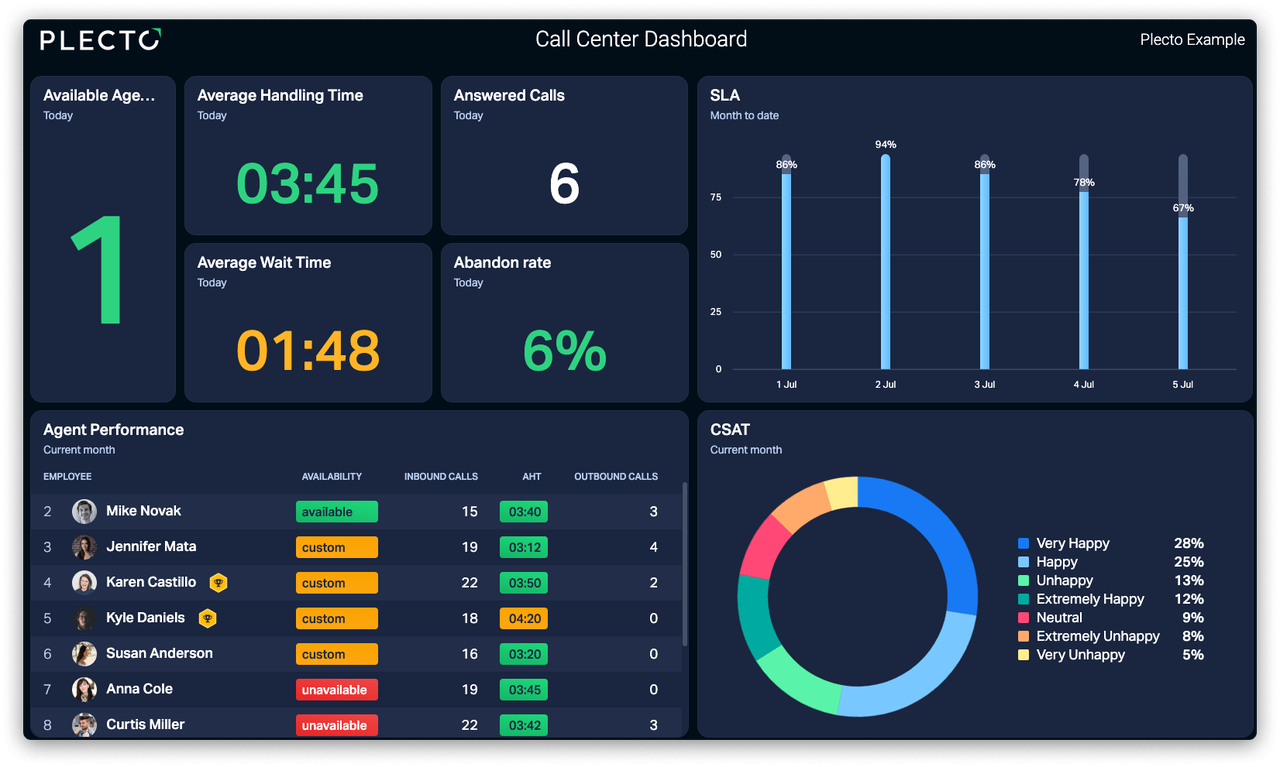There’s no doubt that marketing and sales go together, but you might be thinking, “do sales and CS really have that much to do with one another?” The main commonality between sales and CS is that they both fundamentally have a responsibility for driving positive customer experiences.
Aligning the operations of these two often disparate teams makes it easier for them to complement and support each other, ultimately achieving exceptional customer success, satisfaction, and lifetime loyalty.
This article will help you understand where sales and CS overlap, what happens to your customers when there’s a disconnect between these departments, and why it’s important to align your sales and CS teams. We’ll explain how sales and CS can help each other ensure customer success, and share four ways you can bring these teams together to reach new heights of customer satisfaction!
Where do sales and CS overlap?
The sales department requires no introduction — they’re primarily responsible for bringing in new customers (or following up with and converting qualified leads after being lured in by your marketing team’s enticingly effective activities, of course). Traditionally, CS steps into the mix a little later to ensure that these customers achieve the outcomes that prompted them to do business with the company in the first place.
Despite an underwhelming acknowledgment of it, customer service are oftentimes the ones that keep customers coming back. In today’s sales and CS departments, relationship-building is an important point of overlap. While some companies are responding to this by moving toward value-based selling, many are choosing to hire customer success managers (CSMs) to drive the company’s customer success strategy and guide customers in their journey from new customers to active users. The CSM usually owns the customer loyalty KPIs, which were typically the domain of CS teams. In many cases, CSMs are also responsible for repeat business revenue and customer lifetime value (CLV) KPIs — areas traditionally belonging to sales.
This shift is partially due to the realization that engaged customers are more satisfied, which results in increased loyalty, higher CLV, and lower churn rates. This is where the symbiotic relationship between sales and CS becomes apparent. From the moment a prospect enters the pipeline, the sales department has been collecting information about their pain points, desired outcomes, etc. By the time the deal closes, sales has compiled quite the dossier — and this key customer information is invaluable in helping CS teams understand and effectively serve their customers. Many companies have begun to realize that this type of information is even more valuable with two-way communication between sales and CS. The CSM’s unique insights into the attributes of the company’s most- and least-successful customer relationships can help the sales team identify potential pitfalls during the pre-sales process, avoid making the wrong sales, and set realistic expectations with potential customers. When a business decides to share this information between sales and CS, the whole company benefits.
"Plecto has added transparency to the company, and the tool has brought the departments closer together."
Nicklas Meyer
Partner & COO at PL&Partners
What happens when there's a disconnect between sales and CS?
Believing that customers’ experiences with sales and CS are completely unrelated and exist in a vacuum is a huge miscalculation. Sales organizations that focus primarily on quota-based KPIs may meet their targets, but they’re also likely to close the wrong deals. Making a sale at any cost without considering the solution’s suitability creates dissatisfied customers who believe that the company hasn’t lived up to its promises. Many of these customers will simply stop doing business with the company, while others will contact customer service to complain or demand a refund — and that’s not to mention the potential damage from bad word-of-mouth!
When this happens, it’s an unfortunate situation for everyone involved. It can cause rifts between teams, with sales pointing the finger at CS for not keeping their customers happy and CS pointing the finger at sales or marketing for not properly vetting their customers. At the end of the year, it doesn’t matter that the sales team hit their quotas if CS has been issuing refunds for the wrong deals.
How can sales and CS help each other?
To strike a harmony between sales and CS, it’s crucial that both departments are singing from the same song sheet. Old-school sales departments have a reputation for saying whatever is necessary to close the deal. That won’t fly in today’s business world.
Sales is usually a customer’s first point of contact with a company, and they’re responsible for setting reasonable expectations in terms of price, service, and what their solution can and can’t do. Therefore, it’s imperative that every sales rep is well-versed in their company’s policies and is accurate and consistent in all communication with prospective customers. Neglecting to do this is almost guaranteed to result in customer service headaches and lost revenue later on.
After the sale has been made and the prospect exits the pipeline as a new customer, the customer service team or the CSM assumes responsibility for their satisfaction. Satisfied customers usually continue to do business with a company, upgrade to new or more expensive products or services, and bring in new customers by positive word-of-mouth. If the sales rep has done a good job, CS will be able to retain the customer with minimal effort.
When sales and CS are in sync, an equilibrium exists where sales can generate qualified leads and close the right deals while CS can provide the highest levels of service to keep customers satisfied — and buying!

4 Ways to Align Sales and CS Teams
Here are four easy ways to align sales and CS teams:
1. Define your segments/personas
In today’s ultra-competitive, value-based selling environment, it’s more important than ever to know who your ideal customers are. Pursuing every customer who’s willing to buy your product might meet sales quotas in the short term but it’ll only increase churn later on. Over-promising or attempting to close every sale at any cost is a waste of time that will eventually backfire.
CSMs are on the front line after the sale has closed, which is a perfect vantage point for identifying which customers are a good fit and why — as well as the opposite. Compiling and sharing this information between sales and CS is a roadmap for success because sales will know which personas or customer segments are prone to customer success, and CS will be able to nurture these customers over the long haul. The right customer segments are easier to sell to, easier to keep happy, and will yield lower churn rates and higher LTVs.
2. Involve the CSM in the sales process
Better too much support than too little. Traditionally, the CSM gets involved after the deal has closed, but sometimes it makes sense to bring them in earlier. Besides helping to align sales and CS with the customer’s needs and goals, involving the CSM in the sales process can jumpstart relationship building and help the customer see the added value of the CSM as a trusted advisor who’s committed to their success. On the flip side, the CSM is also perfectly positioned to flag potential issues before a promising prospect becomes a customer service nightmare.

3. Develop a handover process between sales and CS
In companies that use a high-touch business model, customers expect their information to be shared between sales and CS. After going through a lengthy sales process, the last thing a customer expects (or wants) is to have to explain their needs and goals to a CSM the first time they need support. Showing customers that you still care about their needs and appreciate their business after the deal has closed is an easy way to increase their loyalty early in the relationship. Think about the information that’s essential to effectively service the account, and make sure that information is shared between sales and CS. Doing so presents a unified front to the customer and will help them hit the ground running while their excitement is still high!
To ensure compliance, keep this process as streamlined as possible. It can be a quick meeting between sales and the CSM, a one-pager, or even a voice memo. Alternatively, sales might create a “customer success plan” as one of the last steps in the sales process. This should be done in collaboration with the customer and include things like KPIs, milestones, and next onboarding steps to help ensure success after the customer is handed over to the CSM. This is also an opportune time to identify and document possible upsell opportunities. The most important things are to pinpoint the necessary information, define a process for knowledge transfer, and do it consistently.
4. Hold regular check-ins between sales and CS
It doesn’t have to be an arduous process, but the highest levels of customer success will not be achieved in silos. Bi-weekly or monthly check-ins between the sales leader and CSM should be sufficient. This is an opportunity to build a working relationship between these leaders and to identify issues and correct course before negative trends emerge. It’s also a prime opportunity to discuss what’s going well. These meetings can help identify good- and bad-fit customers, communication issues, gaps in the handover process, and ideas for improving customer success.
Your company might also benefit from closer alignment between the sales and marketing teams. Check out this article for three ways to help bring these teams together.
Build your first dashboard.
Start your 14-day free trial today
Get a Precise Overview & Incentivize Collaboration
Reading this article was an excellent first step in aligning sales and CS to help your company achieve new levels of customer success. But to really drive customer success, it’s important to track all of your customer success touchpoints in one place.
Plecto integrates with the most popular CRM and support systems to help you visualize and track key metrics related to important customer success activities including ticketing systems, phone calls, satisfaction ratings, and more!
Plecto also includes built-in performance-driving features like leaderboards, contests, and instant notifications to spark friendly competition and help keep your sales and CS teams working together.
Sign up for a free 14-day trial of Plecto!




